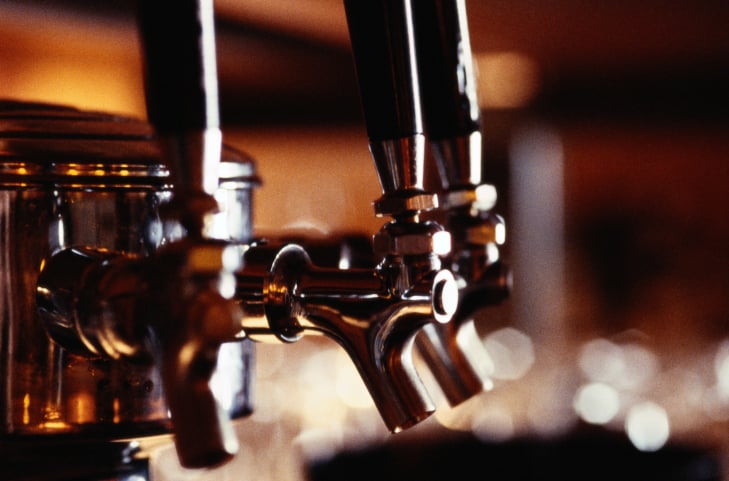Companies and Brands
Anheuser-Busch Waters Down Its Credibility
Published:
Last Updated:
Spirits maker Beam faced an onslaught of outrage from drinkers after it announced it was going to water down its iconic Maker’s Mark bourbon to stretch volume, lowering its alcohol content from 45% to 42%. Such was the outcry, Beam quickly reversed course and promised to keep the alcohol levels as they were. Anheuser-Busch InBev (NYSE: BUD) was sued last year for actually watering down its Budweiser brand, with a former employee-turned-lawyer alleging it routinely used control technology to reduce the alcohol content in its beer by 0.1% and deceive consumers. Source: Thinkstock
Source: Thinkstock
While the judge in the Anheuser-Busch case just dismissed the suit last week, finding that regulators allow for a 0.3% tolerance in the labeling of alcoholic beverages — and as Budweiser never went over that limit, it didn’t matter if the deviation was purposeful or inadvertent — the issue is part of a larger one that plagues the brew industry.
Beer sales fell in 2013, with total U.S. beer volume sold falling to 2.8 billion 2.25-gallon cases from 2.84 billion cases sold the year before, a 1.4% drop. After a meager 1% increase in sales in 2012, the first increase in years, the industry is once again turning south. Craft beer, on the other hand, saw volumes rise 18% last year to 15.6 million barrels, while the retail dollar value of craft beers surged 20% year over year to more than $14 billion. Craft beer now represents 7.8% of the total U.S. beer market, its highest level ever.
Similarly, hard cider — although still small in comparison to the overall beer market, representing just 1% of sales — saw its market nearly double last year and Nielsen data says volumes were up 102% in 2013 and have grown another 90% so far this year as Boston Beer’s (NYSE: SAM) Angry Orchard brand came to dominate the niche.
And though it’s even tinier than cider, with just 823 cases produced last year, the emerging mead market saw sales more than double to $221 million, a 130% jump, making it the fastest-growing segment of the U.S. alcohol market.
In contrast, even though Anheuser-Busch had revenues of $10.61 billion, that beat analyst estimates, depletions in North America (or sales made by distributors to retailers and are considered a proxy for consumer demand) fell 2.6% in the quartersales made by distributors to retailers and are considered a proxy for consumer demand.
When it comes to our alcohol, we want to get what we pay for, not some watered down ripple passed off as the real thing. The rise of the craft brew industry was largely in response to drinker’s desire for taste and innovation in the beer from the otherwise bland flavor of those beverages produced by mass brewers.
ALSO READ: America’s Most Profitable Products
That’s spilled over these days into niche adult beverage markets, including spirits, where we see a preference for premium and superpremium varieties; the growth of hard ciders and teas; and even the emergence of mead as a growth opportunity.
What it all points to is flavor, something sorely lacking in mass-produced brews, and just because Anheuser-Busch can skim the alcohol content of its beer to stretch profits doesn’t mean it should. It does itself no favors by watering down its commitment to its loyal drinkers.
Want retirement to come a few years earlier than you’d planned? Or are you ready to retire now, but want an extra set of eyes on your finances?
Now you can speak with up to 3 financial experts in your area for FREE. By simply clicking here you can begin to match with financial professionals who can help you build your plan to retire early. And the best part? The first conversation with them is free.
Click here to match with up to 3 financial pros who would be excited to help you make financial decisions.
Thank you for reading! Have some feedback for us?
Contact the 24/7 Wall St. editorial team.